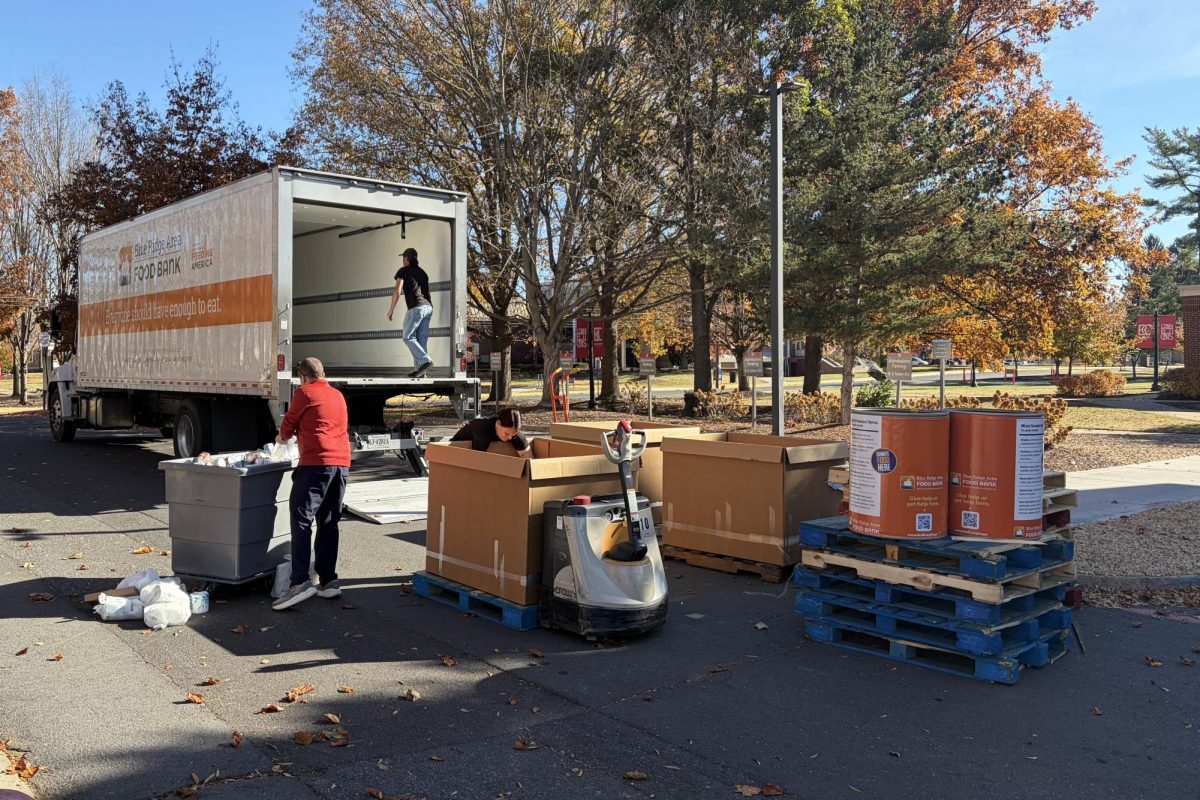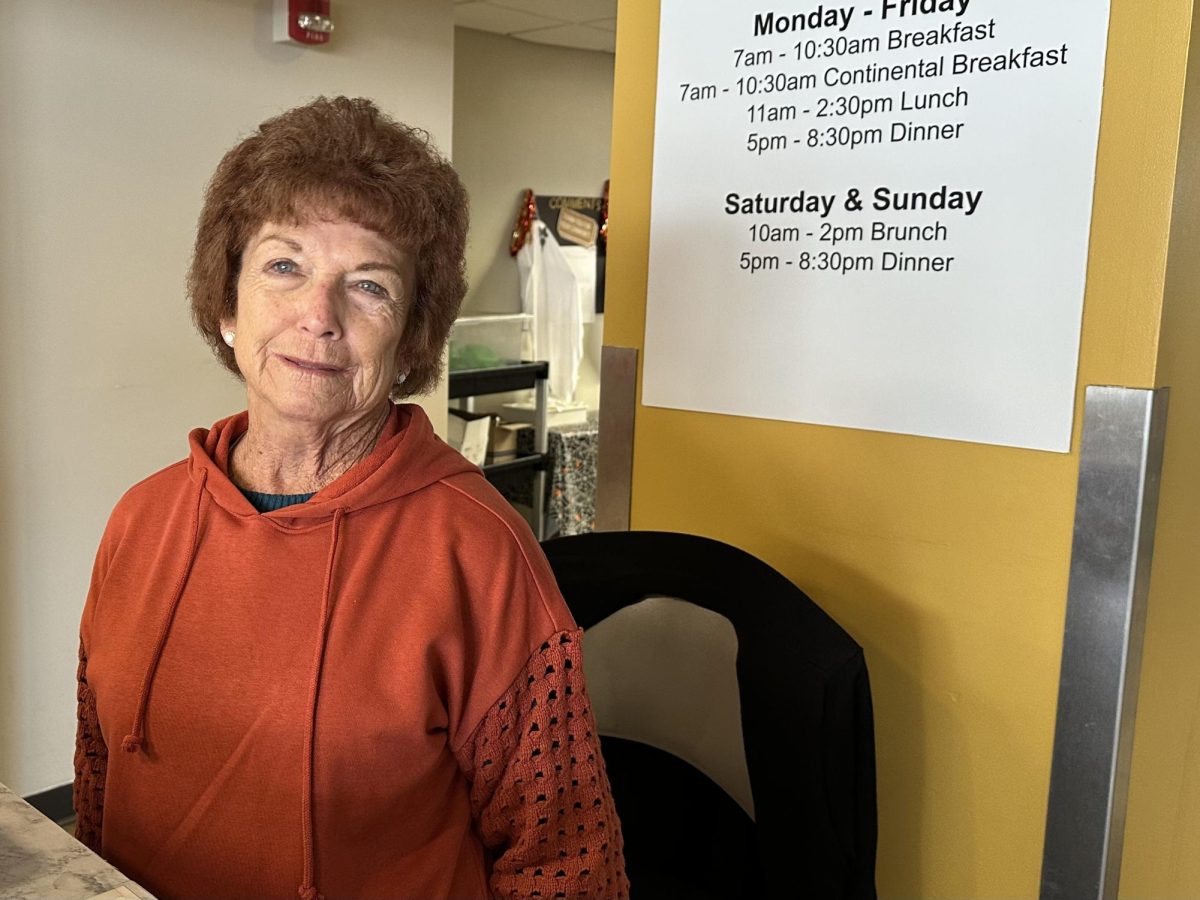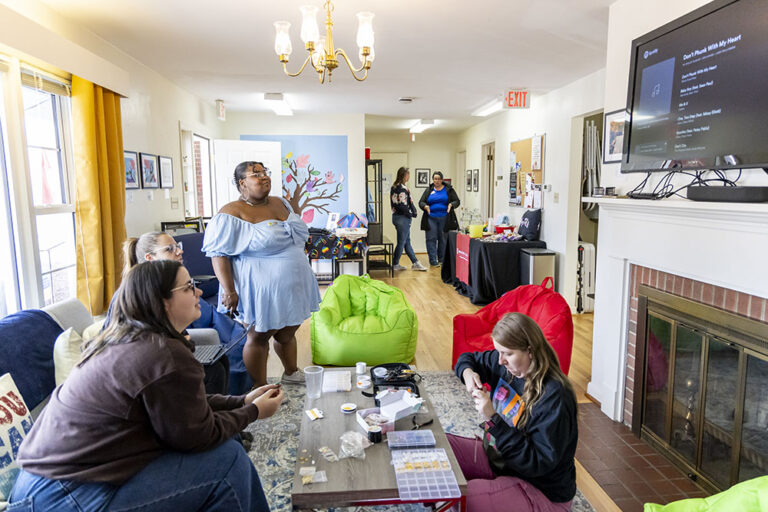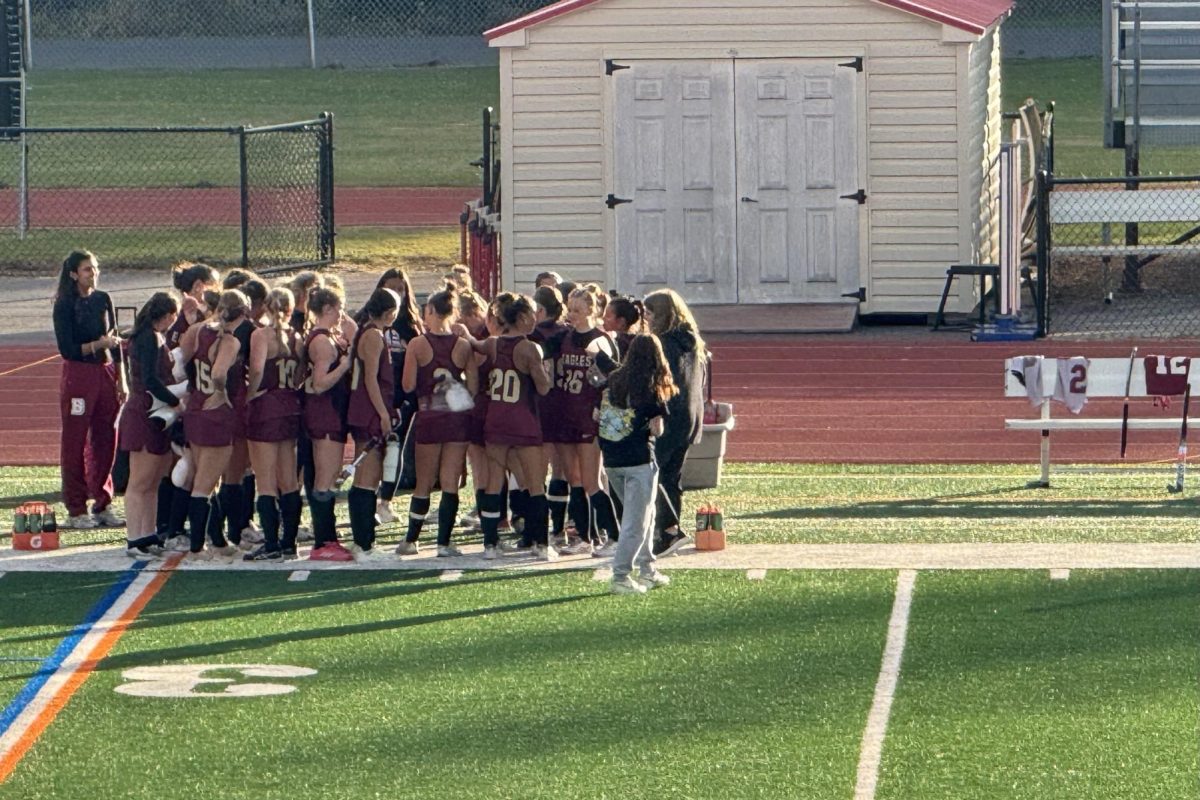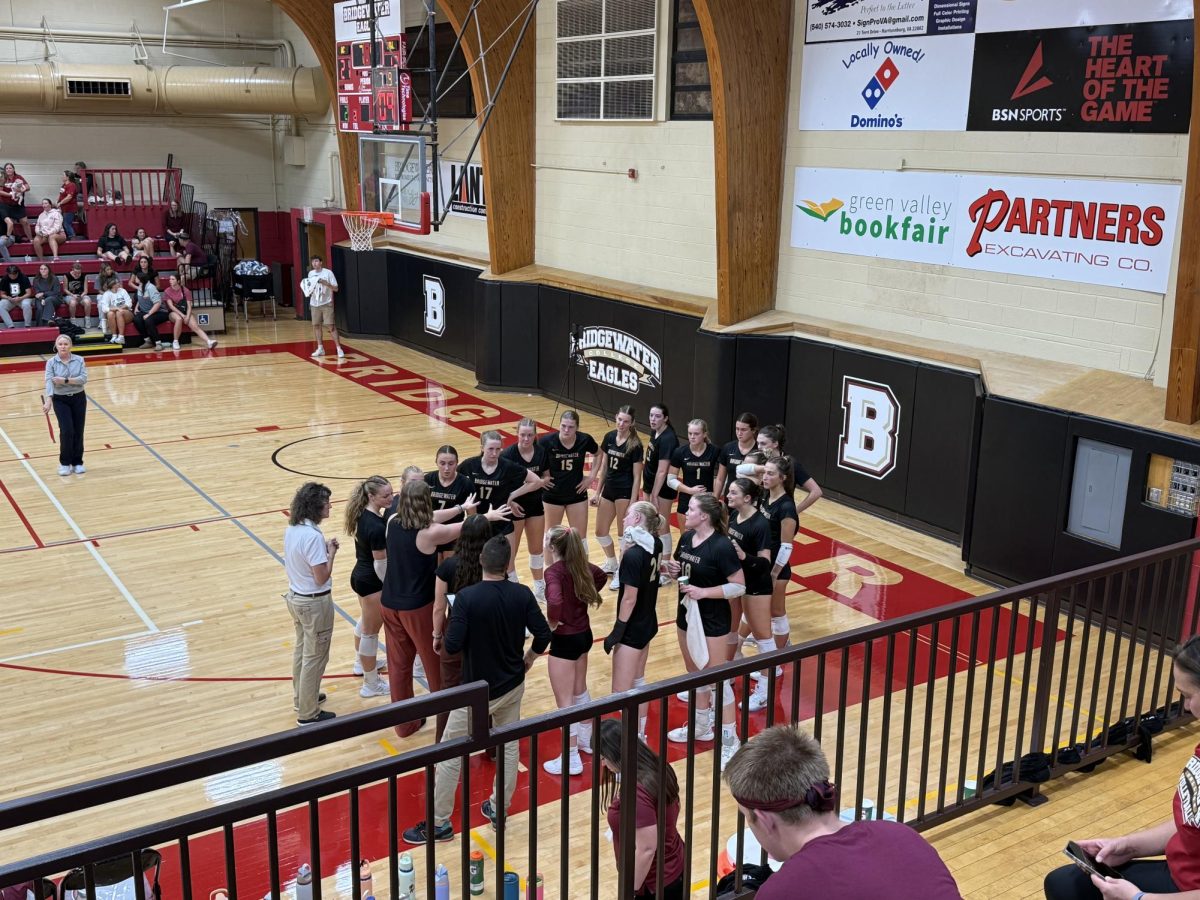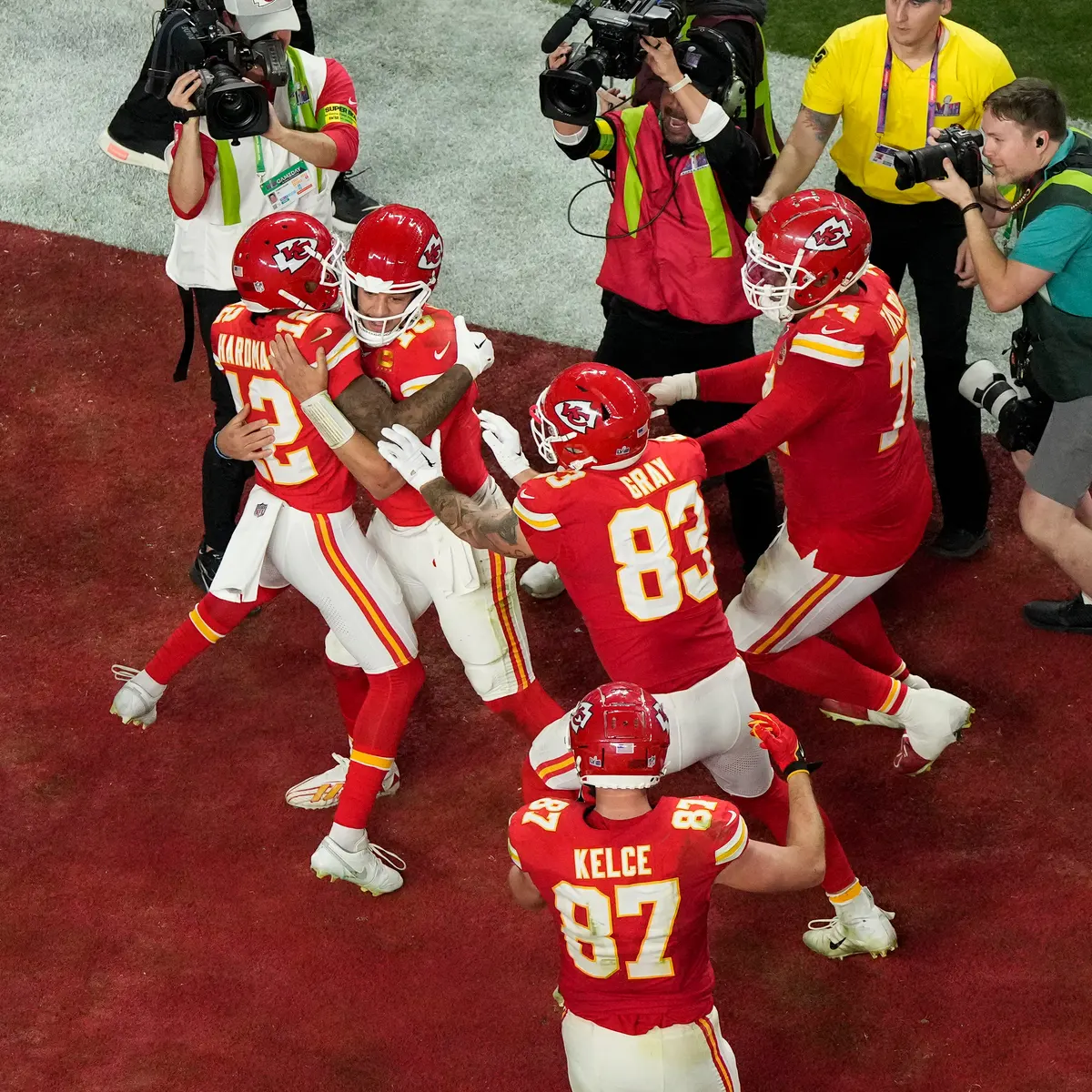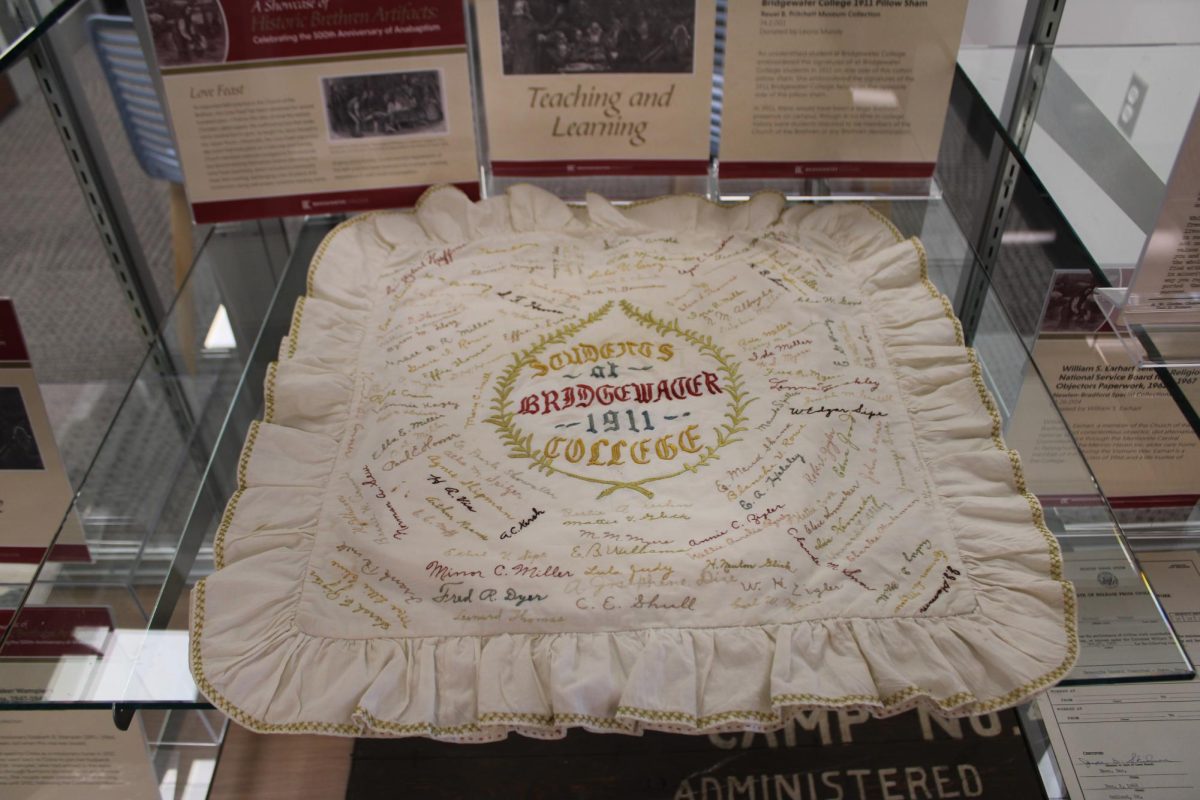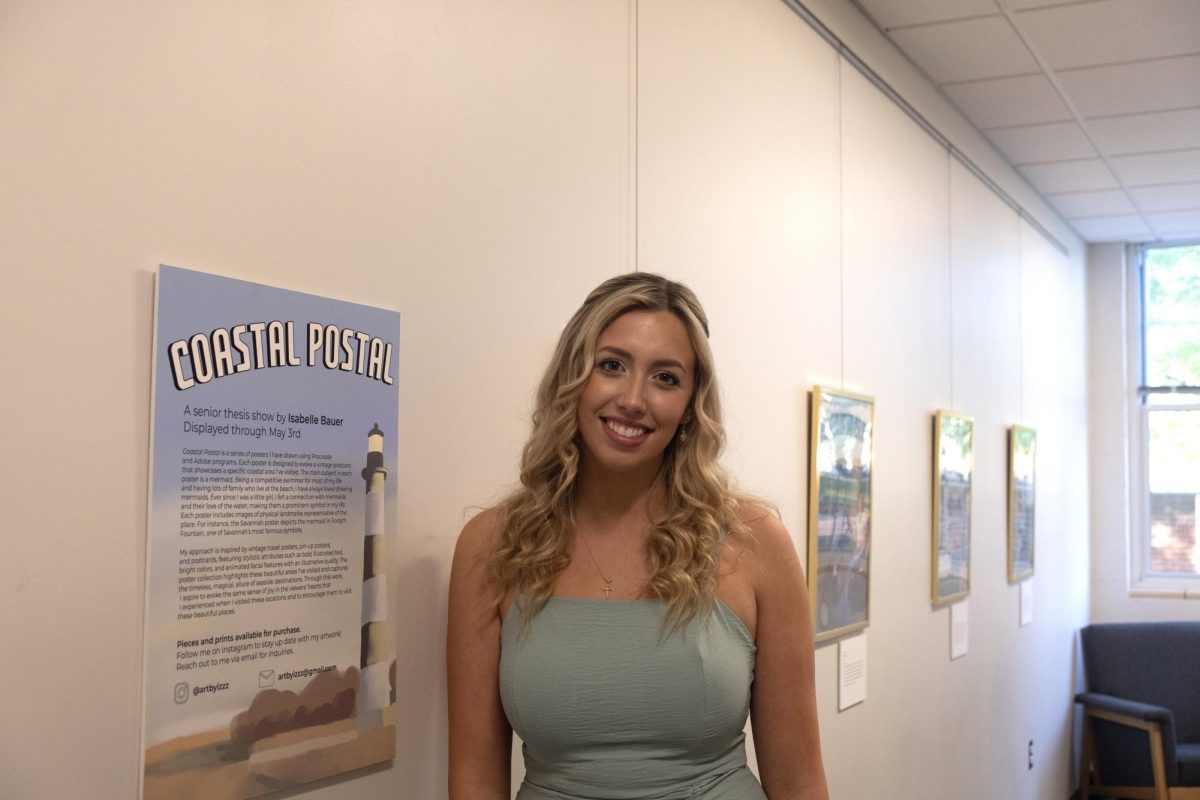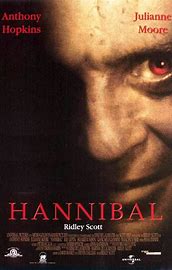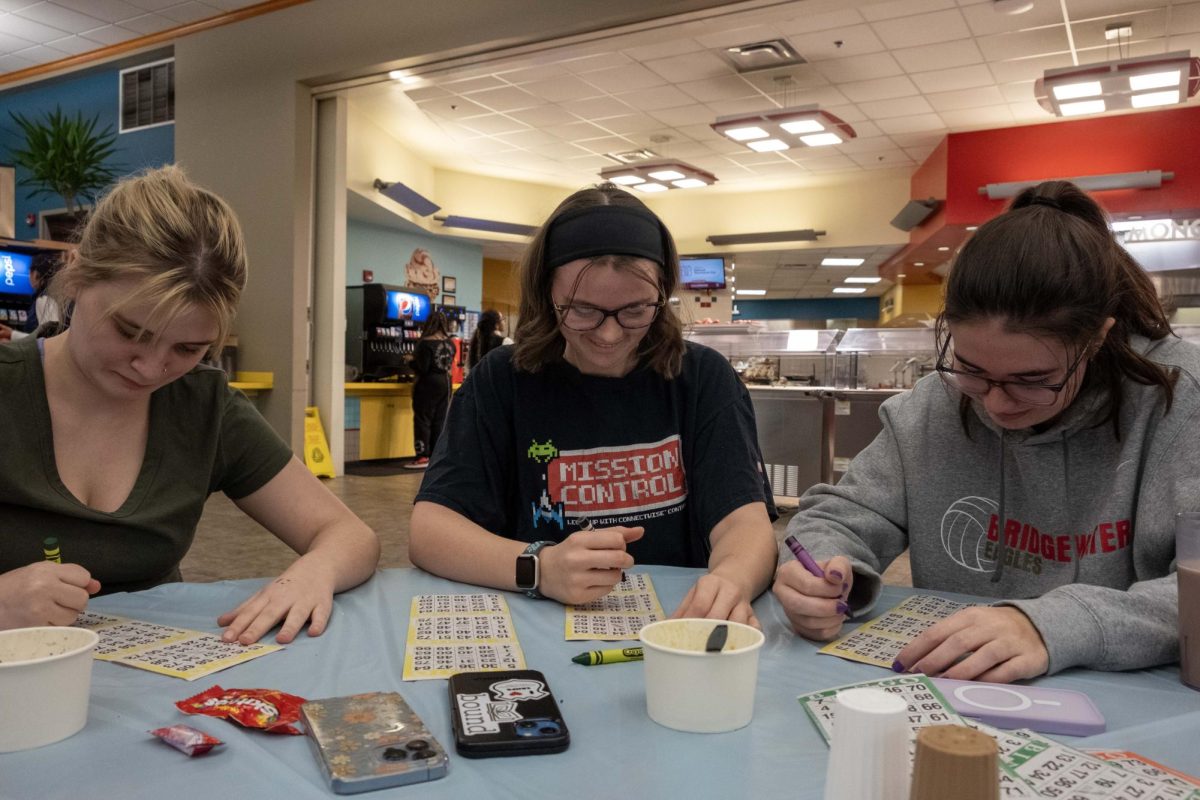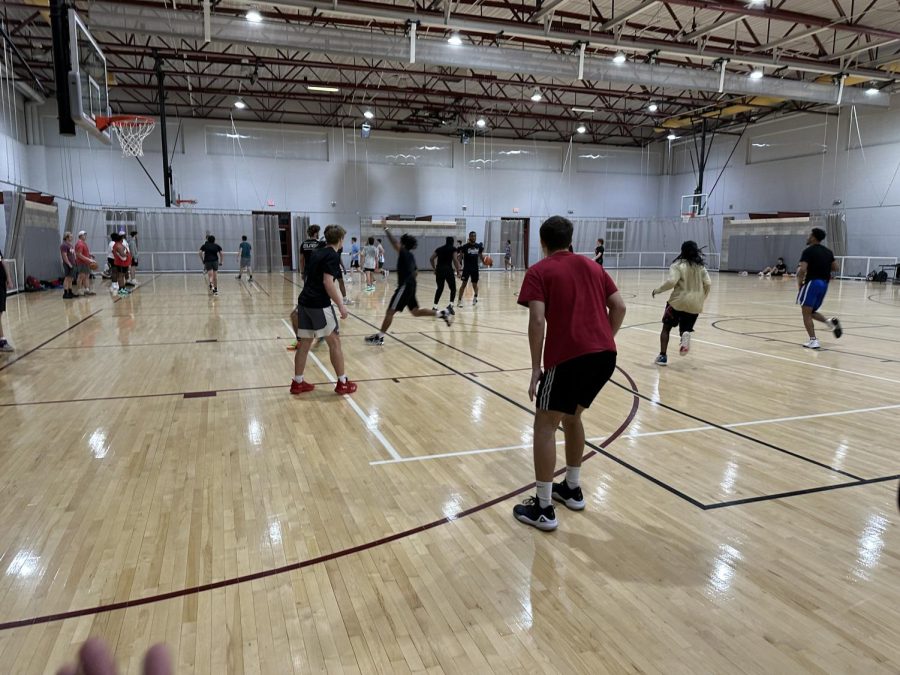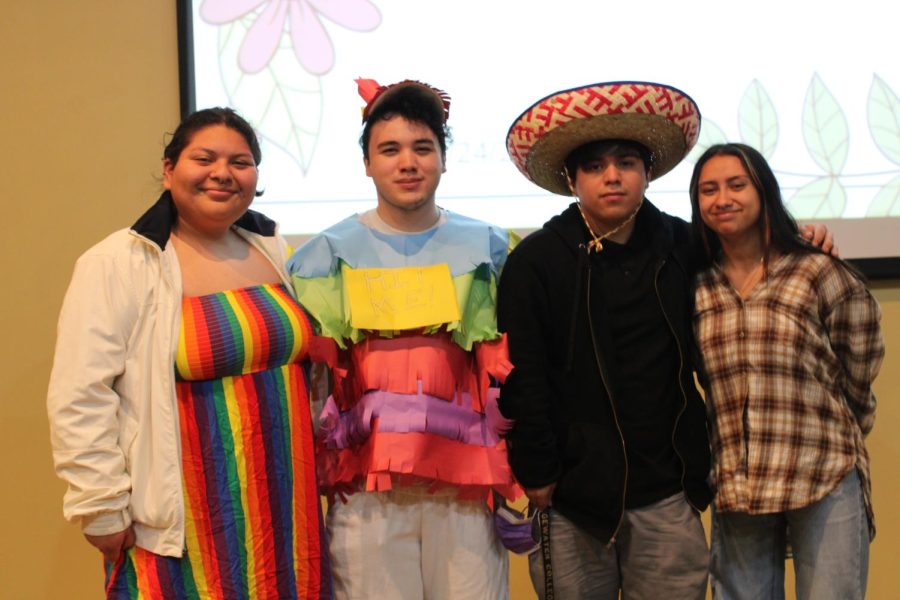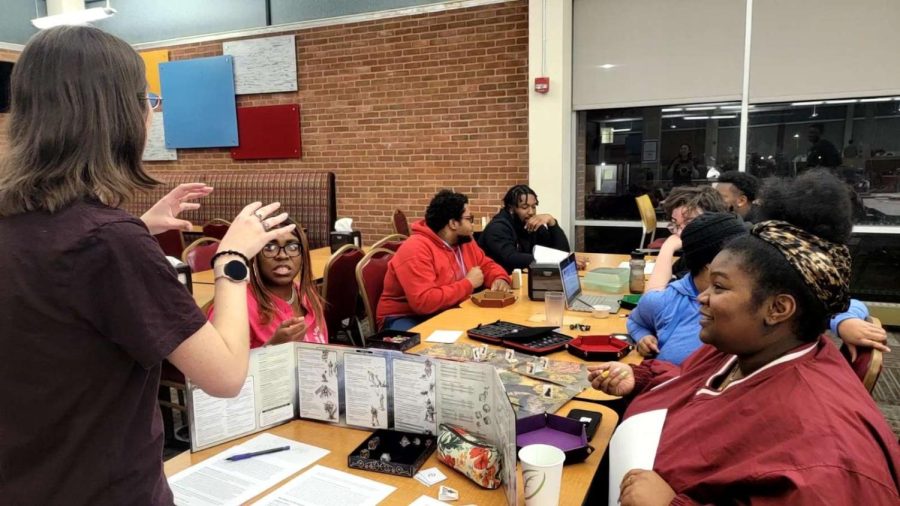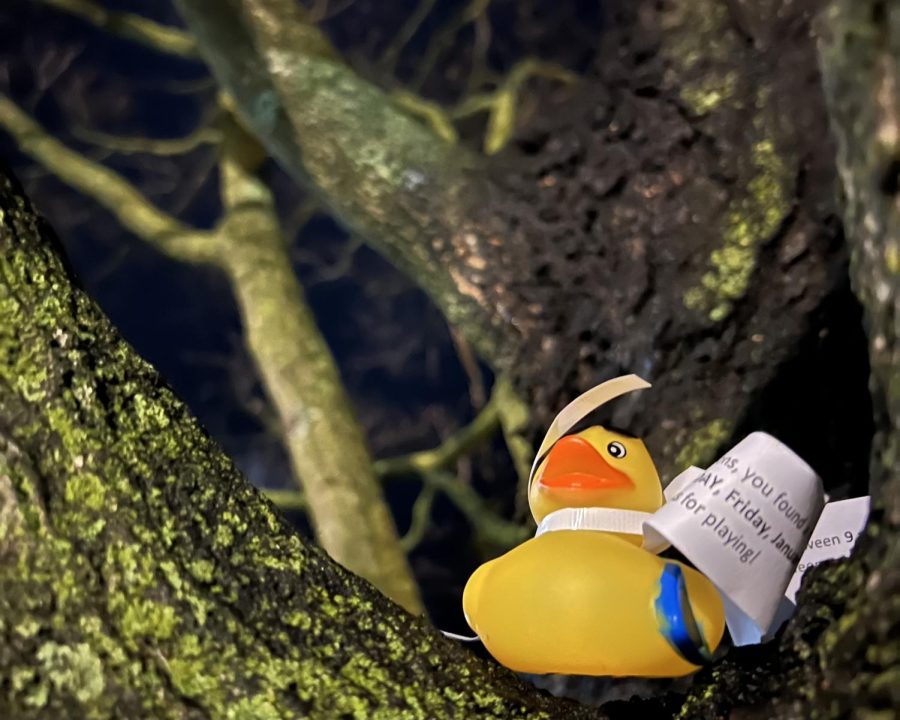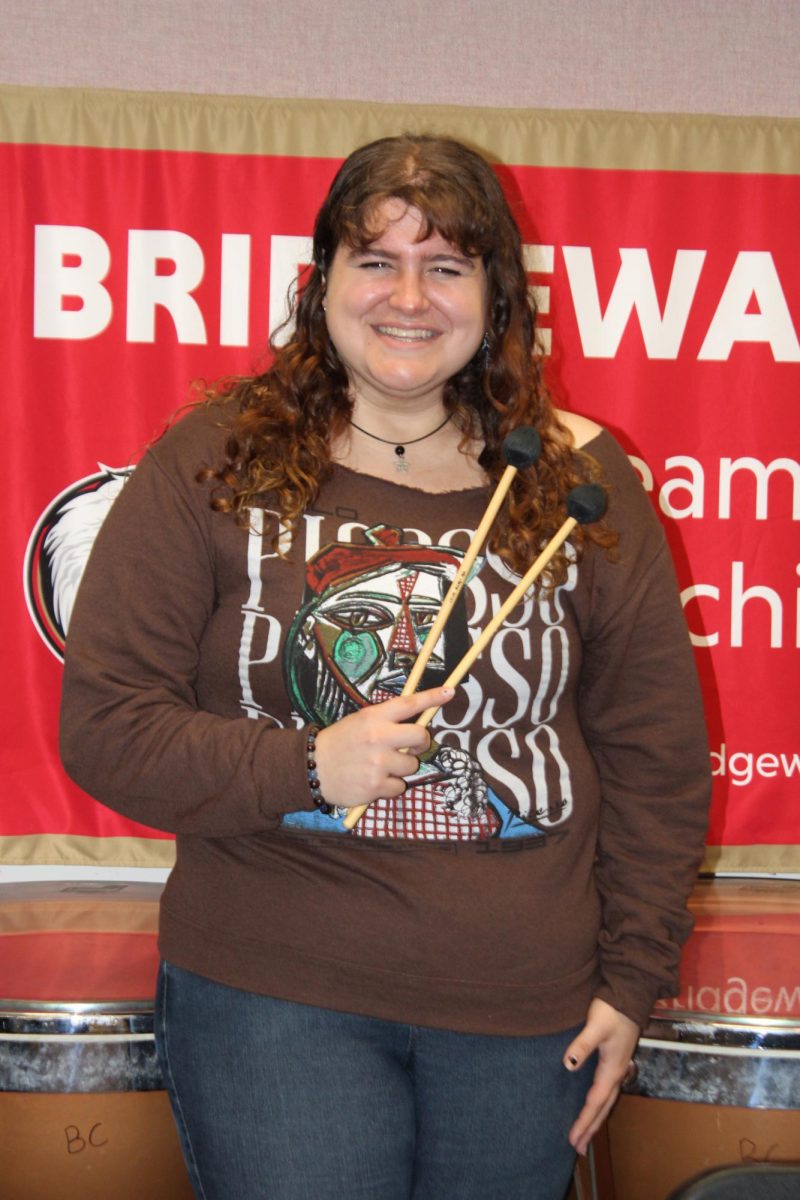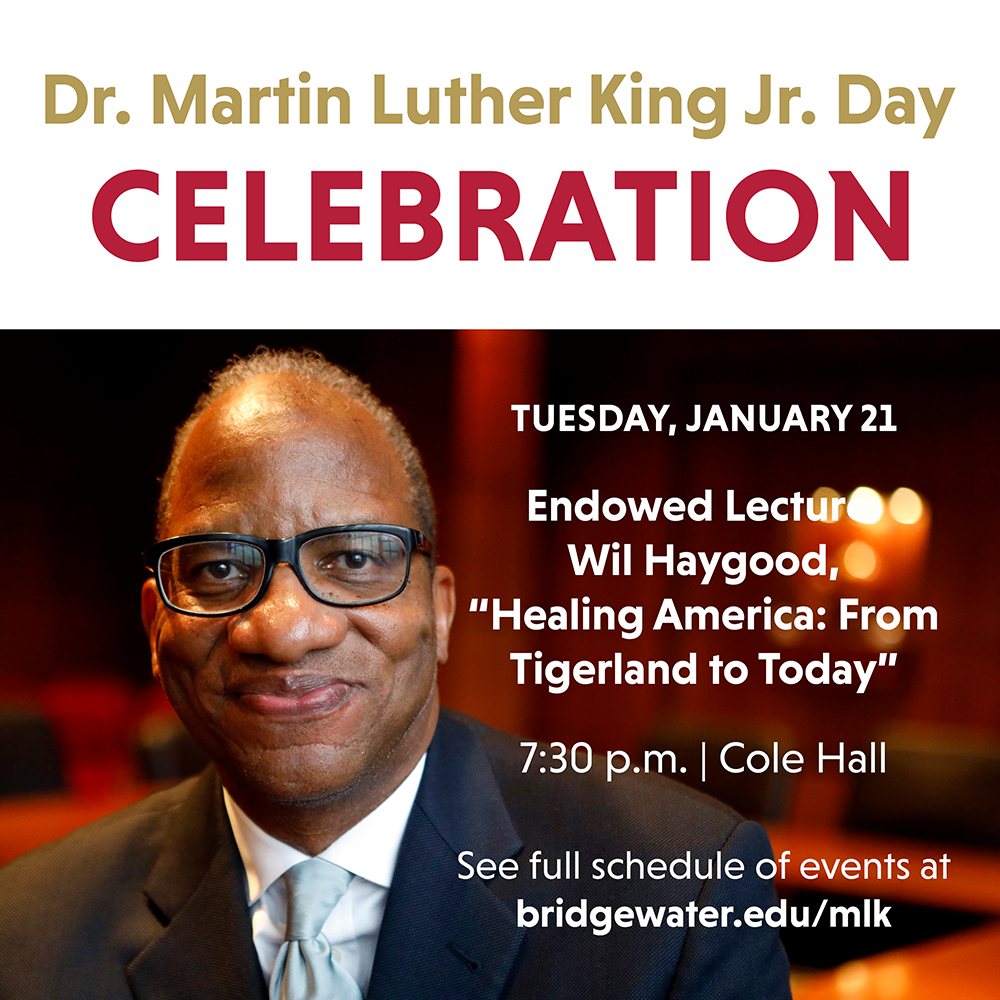A Bridgewater Shakespearean Tragedy
The Theater Department Presents Rosencrantz and Guildenstern are DeadBridgewater, Va. – On Oct. 31, the Bridgewater College Theater Department presented the play Rosencrantz and Guildenstern are Dead, a dramatic comedy about the two forgotten characters of Shakespeare’s Hamlet. Shakespeare’s Hamlet centers around a prince named Hamlet who seeks revenge on the king for killing his father for the throne. Hamlet encounters many questions, like whether “to be or not to be” and the mystery of death. After Hamlet kills his love interest’s father and loses his sanity, the king orders Rosencrantz and Guildenstern, Hamlet’s oldest friends, to send Hamlet to England. While on the boat to England, Rosencrantz and Guildenstern open a note from the king that states that Hamlet is being sent to England to die. Hamlet finds this letter, and switches it with a revision, stating that Rosencrantz and Guildenstern be put to death. The play begins with Rosencrantz and Guildenstern betting on a coin. Guildenstern, played by junior Taylor Callahan, asks Rosencrantz, senior Trey Roach, if he remembers what happened to them, but Rosencrantz does not know. After playing with the coin more, they realize that the king, played by senior Christian Sanchez, summoned them to figure out what is wrong with Hamlet. Rosencrantz and Guildenstern speak with Hamlet, played by senior Katie Downing. Hamlet outsmarts them, and they are left figuring out how to help Hamlet. They encounter a group of traveling actors led by the Player, freshman Gabriella Signor. The Player tells them that they are actors in life and they cannot question their existence because life is already complex to understand. The Player says, “You can’t go through life questioning your situation.” The traveling actors called the Tragedians are played by senior Samantha “Ace” Brown, sophomore Kylee Lorio and junior Christina Ludwig. Together they rehearse a play they had been working on. The play is a foreshadowing of the deaths of Rosencrantz and Guildenstern. The scene changes to a boat with Rosencrantz and Guildenstern leading Hamlet to England. Suddenly, Hamlet escapes the boat due to pirates and Guildenstern reads the letter Hamlet rewrote, sentencing them to death. Rosencrantz asks Guildenstern, “Eternity is a terrible thought. When does it end?” Rosencrantz does not understand why his fate is to die, but Guildenstern quotes the philosopher Socrates: “Since we don’t know what death is, we have no reason to fear it.” Soon Rosencrantz and Guildenstern are the only characters left on stage. The light above Rosencrantz turns off, signaling his death. Guildenstern gives a monologue thinking over if he could have changed anything to prevent this outcome. The lights then turn off. Co-director of the play, senior Angela Tolomei, says there are three worlds within Rosencrantz and Guildenstern are Dead, including the void where they reside, the duo’s interactions with the Tragedians and the dark tragedy of Hamlet. According to Tolomei, this play “looks at where, how, and why they exist in addition to the deterioration of their world.”
November 12, 2019
Bridgewater, Va. – On Oct. 31, the Bridgewater College Theater Department presented the play Rosencrantz and Guildenstern are Dead, a dramatic comedy about the two forgotten characters of Shakespeare’s Hamlet.
Shakespeare’s Hamlet centers around a prince named Hamlet who seeks revenge on the king for killing his father for the throne. Hamlet encounters many questions, like whether “to be or not to be” and the mystery of death. After Hamlet kills his love interest’s father and loses his sanity, the king orders Rosencrantz and Guildenstern, Hamlet’s oldest friends, to send Hamlet to England.
While on the boat to England, Rosencrantz and Guildenstern open a note from the king that states that Hamlet is being sent to England to die. Hamlet finds this letter, and switches it with a revision, stating that Rosencrantz and Guildenstern be put to death.
The play begins with Rosencrantz and Guildenstern betting on a coin. Guildenstern, played by junior Taylor Callahan, asks Rosencrantz, senior Trey Roach, if he remembers what happened to them, but Rosencrantz does not know.
After playing with the coin more, they realize that the king, played by senior Christian Sanchez, summoned them to figure out what is wrong with Hamlet. Rosencrantz and Guildenstern speak with Hamlet, played by senior Katie Downing. Hamlet outsmarts them, and they are left figuring out how to help Hamlet.
They encounter a group of traveling actors led by the Player, freshman Gabriella Signor. The Player tells them that they are actors in life and they cannot question their existence because life is already complex to understand. The Player says, “You can’t go through life questioning your situation.”
The traveling actors called the Tragedians are played by senior Samantha “Ace” Brown, sophomore Kylee Lorio and junior Christina Ludwig. Together they rehearse a play they had been working on. The play is a foreshadowing of the deaths of Rosencrantz and Guildenstern.
The scene changes to a boat with Rosencrantz and Guildenstern leading Hamlet to England. Suddenly, Hamlet escapes the boat due to pirates and Guildenstern reads the letter Hamlet rewrote, sentencing them to death.
Rosencrantz asks Guildenstern, “Eternity is a terrible thought. When does it end?”
Rosencrantz does not understand why his fate is to die, but Guildenstern quotes the philosopher Socrates: “Since we don’t know what death is, we have no reason to fear it.”
Soon Rosencrantz and Guildenstern are the only characters left on stage. The light above Rosencrantz turns off, signaling his death.
Guildenstern gives a monologue thinking over if he could have changed anything to prevent this outcome. The lights then turn off.
Co-director of the play, senior Angela Tolomei, says there are three worlds within Rosencrantz and Guildenstern are Dead, including the void where they reside, the duo’s interactions with the Tragedians and the dark tragedy of Hamlet. According to Tolomei, this play “looks at where, how, and why they exist in addition to the deterioration of their world.”


